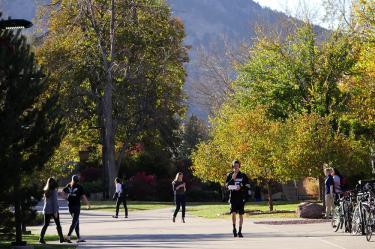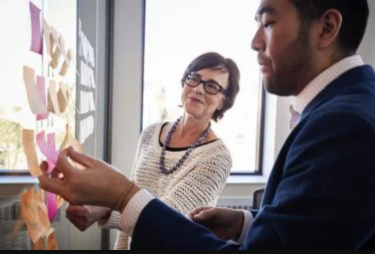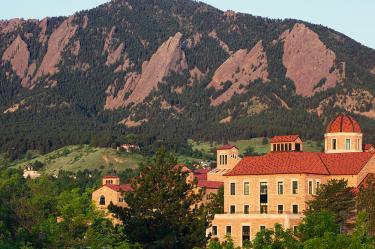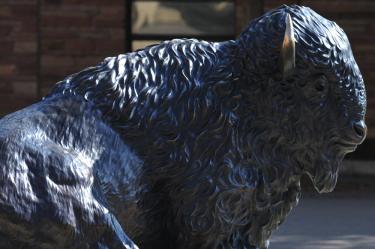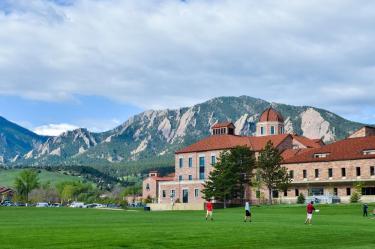Measuring the Impact of Arts & Culture in Aspen and Snowmass

A 2020 economic study revealed that arts and culture have a significant impact, giving community and business leaders insight on both the direct and indirect effects of these activities.
When most people picture mountain communities, skiing or hiking are usually top of mind. In Pitkin County, however, something else brings people to the area: arts and culture. While the impact of arts and culture was known in Aspen and Snowmass anecdotally and from past studies, organization leaders wanted current, specific data they could reference when speaking with municipality leaders and elected officials. Individual organizations also knew they could utilize this data when applying for grants, appealing to their donor base, or making other key decisions.
After a group of organizations approached the Aspen Chamber Resort Association (ACRA) to request an impact study of arts and culture on the communities of Aspen and Snowmass, the ACRA worked in collaboration with the Business Research Division at the Leeds School of Business and RRC Associates to conduct the survey and impact study. A sample of the twelve participating organizations includes the Aspen Art Museum, Aspen Center for Environmental Studies, Aspen Film, Aspen Historical Society, The Aspen Institute, Theatre Aspen, and Wheeler Opera House.
In order to assess both direct and indirect impacts, the Aspen/Snowmass Arts & Culture 2019 Economic Impact Study included the following categories: operations of participating organizations, audience trip spend, other organizations engaged in arts & cultural production, and second home purchases influenced by arts and culture. Data was collected through a variety of in-person and online surveys as well as from governmental economic data.
Aspen economic study outcomes
The compiled research revealed that arts and culture in Pitkin County in 2019 generated approximately $451 million in economic output. What made up this astounding figure was $274 million in value added, $167 million in labor income, and employment of 2,831 people in Pitkin County. The economic output of arts and culture accounted for 12.4% of Pitkin County’s total economy in 2019.
Approximately 70% of the total economic impacts of arts and culture could be attributed to direct effects, while the remaining 30% was linked to multiplier effects, which include supply-chain effects and impacts resulting from employee spending.
Pitkin County is a hub for arts and culture for Colorado residents (55% of visitors) and for visitors from outside Colorado (45% of visitors). The county has a much higher share of jobs directly involved in arts and culture than Colorado and the nation. These workers help cater towards the 20-25% of summer visitors who identified arts and culture as one of their main reasons for visiting, and the 27% of winter overnight skiers who experienced arts and culture during their stay.
Second homeowners
Second homeowners also have a major impact on Pitkin County’s economy and community. These homeowners “are an economy in and of itself in Aspen and Snowmass,” according to Sarah Reynolds Lasser, Senior Director of Business Development for the ACRA, in an interview with the Leeds School of Business.
According to the U.S. Census Bureau, the roughly 5,000 second homes in Pitkin County account for 35% of the total residences. With approximately 2,000 jobs generated for these homes, this equates to 1.4 workers per residence. Many of these second homeowners (25%) listed arts and culture as being at least half of their reason for buying a second home here. As seen in the past year amid the pandemic trend of urban flight, second homeowners and other visitors are “relocating to here for six or nine months or an extended summer, whereas they might have normally only stayed for a few weeks,” said Lasser.
Second homeowners and other visitors are “relocating to here for six or nine months or an extended summer, whereas they might have normally only stayed for a few weeks,”
said Lasser.
The pandemic resulted in a very busy summer in Pitkin County, with September occupancy higher in 2020 than it was in 2019. While winter brings a new set of challenges, the economic impact study provides a powerful tool unknown at the time of origin: a benchmark of hard dollar and employment figures for the organizations to reference as we see a return to normal times. These data points will be invaluable to organizations and community leaders as they make crucial decisions along the path to recovery.
Not only do the participating organizations in the study provide a high caliber of arts and culture offerings, but they arrange extensive outreach in schools as well as many volunteer and board opportunities. Beyond the total economic impact, Lasser highlighted how these organizations reinvest into the community through complimentary tickets, education, camps, and classes to create a “full circle of impact.”
In addition to arts and culture as a driver of tourism and second home activity, there are other local arts and cultural activities which contribute to the economy of Pitkin County. “These are less visible but important economic contributors as well,” said David Becher of RRC Associates, co-author of the study. These include activities that involve “arts and cultural production,” as defined and measured in the Arts and Cultural Production Satellite Accounts produced by the US Bureau of Economic Analysis and National Endowment for the Arts. These contributions include arts- and culture-related activities in such industries as architecture, interior design, advertising, arts education, construction of arts facilities, and music stores and art galleries.
Aspen's diverse economy
Other businesses, like hotels, restaurants, and retail shops, also benefit from arts and culture as they cater to locals or visitors before or after an event. Lasser painted the scene of “walking through Aspen in the middle of July where you have music students from around the world who are doing pop-up alfresco concerts,” a setting that positively influences resident or visitor sentiment and how engaged they feel with the community.
With dozens of other ski towns scattered across Colorado, Aspen and Snowmass distinguish themselves from an economic and experiential perspective through their arts and cultural offerings. With a quantifiable, significant impact, business and community leaders can better justify arts and culture investment, which is now proven to have ripple effects throughout the entire community.
Anna Sernka is a Student Research Assistant at the Leeds School’s Business Research Division. She may be reached at Anna.Sernka@Colorado.EDU.

